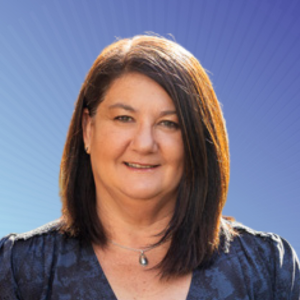Superannuation assets projected to almost triple in 2041
According to the tenth edition of Deloitte’s Dynamics of the Australian Superannuation System, Australia’s superannuation landscape will experience continuing growth, consolidation and rationalisation alongside ongoing economic and regulatory change over the next 20 years.
The report looks at market dynamics, demographic shifts, longevity and retirement incomes, as well as possible asset allocation impacts on the Australian share market, and finds:
- total superannuation assets projected to almost triple, to over $9 trillion in 2041, from $3.4 trillion today
- changes in market share of different sectors, affected by account and fund consolidation and the impacts of stapling (accounts that follow individuals as they change jobs)
- transformation of the post-retirement segment as funds implement their Retirement Income Covenant strategy from mid-2022
- total fund investment in Australian equities projected to increase from 34 per cent of total ASX market capitalisation today to 42 per cent by 2041.
Deloitte Consulting partner, Andrew Boal said, “While COVID-19 has caused volatility in investment markets over the last two years, and with inflation and cash rates at all-time lows, the Australian superannuation industry has continued to grow, driven by both contribution inflows exceeding benefit outflows and robust investment returns.”
“Funds that fail to reach scale or underperform relative to their peers will struggle to survive unless they can transform their businesses, and quickly, and we expect to end up with a modest number of very large funds that will increase their foreign investments due to their size and the relative size of global opportunities compared to the small Australian market. They will also increase investment in privately-held assets,” said Deloitte National Superannuation Lead, Russell Mason.
MetLife declared inclusive by Diversity Council Australia
MetLife Australia has been listed as an inclusive workplace on Diversity Council Australia’s (DCA) Inclusion@Work Index 2021.
Participating for the first time in 2021, MetLife is the only life insurance company to be listed in the Index this year, reflecting the work the organisation has undertaken to increase diversity and ensure an inclusive experience for all employees.
Run bi-annually, the DCA’s Inclusion@Work Index enables organisations to track the state of diversity and inclusion of their workforce and be benchmarked against leading Australian employers.
Commenting on the announcement, Richard Nunn, MetLife Australia CEO, said:
“This recognition by DCA is testament to our commitment to diversity, equity and inclusion at MetLife. We’re thrilled to be listed among some of Australia’s leading and most progressive workplaces. This recognition validates the real and meaningful steps we’ve taken to enable our people to bring their whole selves to work and really thrive. We know there is more to be done and we’ll use the insights from the Inclusion@Work Index to continue to build MetLife into a leading workplace and life insurer.”
The double-edged sword of super switching
Iress has partnered with Griffith University to release new research, which highlights the double-edged sword of the ease with which superannuation members can make changes to their investment options. According to the research, there was a near tripling of members switching investment options within their superannuation during the COVID-19 induced market downturn, often resulting in poor choices which can create a knock-on effect to financial wellbeing and retirement savings.
The research, which analysed over 42,000 superannuation switch decisions from 1 January 2019 to 31 March 2021, identified a 50 per cent increase in poor superannuation switching decisions as the pandemic progressed, with ‘bad’ switches defined as having a negative impact on superannuation balances compared to doing nothing.
The research explores these behaviours and highlights three key opportunities for superannuation funds as:
-
- improving access to quality financial education
- harnessing technology to positively intervene in member decisions
- supporting better access to quality financial advice.
Griffith Business School’s senior lecturer, Dr Kirsten MacDonald, said: “While better superannuation switching access and financial control is a good thing, that very access could also be putting the retirement needs of those with lower levels of financial literacy and without access to advice at risk.”
Alternative fund managers transforming their approach to ESG, talent and new products
According to the results of EY’s 2021 Global Alternative Funds survey, Can the difference of one year move you years ahead? , the global alternative funds industry has managed to navigate pandemic-related disruption and uncertainties, with firms now considering ways to pivot towards proactive transformation and address emerging trends shaping the future of the sector.
The survey found funds have been transforming their strategies and products to fit the changing profile and needs of investors and, as a result, investors’ perceptions of the value of alternative investments have risen.
ESG is an increasing area of focus, with alternative fund investors increasingly factoring ESG considerations into their investment decisions and 75 per cent saying their scrutiny of managers’ ESG policies has increased in the past two to three years.
Alternative fund managers in Asia-Pacific however seem to have more work to do in this space than counterparts in the rest of the world, with just 48 per cent saying they have implemented ESG capabilities, compared with 78 per cent who said the same in Europe, and 59 per cent in North America.
During 2021, digital assets also became an area of focus and, while current exposures to cryptocurrency among most managers remain small, one in four managers expect their exposures in this space to increase in the coming year.








